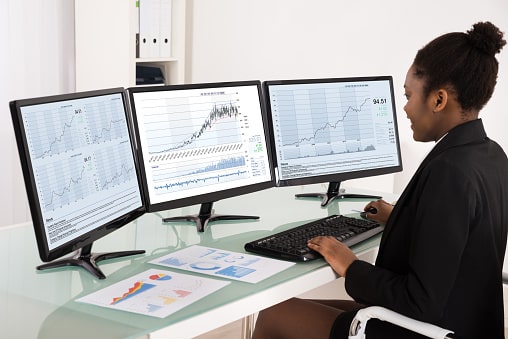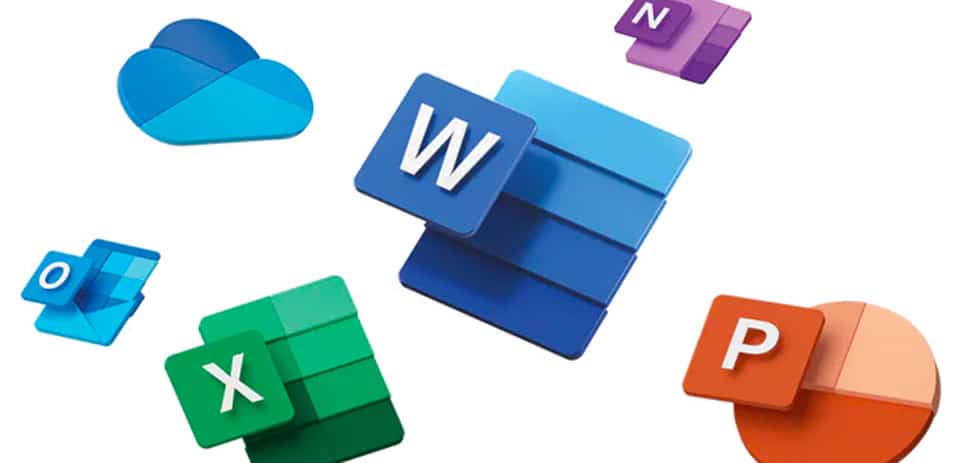In the fast-paced, interconnected world of the digital age, efficiency and productivity have become the cornerstones of success in any work environment. Amidst the myriad of tools and technologies at our disposal, one particular setup has been quietly revolutionising workspaces across various industries – the use of dual monitors.
This configuration, once perceived as a luxury reserved for tech enthusiasts or specialised professions, is now gaining widespread recognition for its extensive benefits. The dual monitor setup is breaking down old assumptions and opening up new possibilities for enhancing productivity in the digital workspace.
The Common Misconception About Dual Monitors
It’s a common misconception that dual monitors are the exclusive domain of tech-savvy individuals or those in specialised fields requiring extensive screen space. However, the reality is far more inclusive. The additional display of real estate that a second screen provides can significantly enhance productivity and ease of work for a wide range of professionals. From accountants crunching numbers all day to writers juggling multiple documents, and even educators navigating online teaching platforms, dual monitors offer tangible benefits that can transform the way we work.
The Struggle with Single Screen Limitations
Working within the confines of a single screen often presents a host of challenges. These limitations become glaringly apparent when we attempt to fit multiple windows next to each other or find ourselves continuously clicking through layers of applications. The time spent searching for the right window among a sea of open applications can quickly accumulate, leading to decreased productivity and increased frustration. Dual screens offer a practical solution to these issues, providing the much-needed space to organise and access our digital workspaces more efficiently.
The Time Drain of Application Switching
The time spent switching between different apps is often underestimated, yet it represents a significant drain on productivity. A study by software developer Mavenlink revealed a startling statistic – 73% of businesses spend over an hour per day on average just toggling between different applications. This time could be better spent on actual work tasks, and dual monitors can help reduce this unnecessary time drain by allowing multiple applications to be open and visible simultaneously.
Productivity Research on Dual-Screens
The Impact of Dual Screens on Productivity
Research by Jon Peddie found that using two screens can improve productivity by an average of 42% across various job types. This significant boost can translate to hours saved each week, leading to improved work efficiency and output. Imagine what you could achieve with almost half of your work time freed up!
The Rising Trend of Dual Monitor Use
The use of dual monitors has been on a steady rise, with a compound annual growth rate of 10% between 2002 and 2017. This trend underscores the growing recognition of the benefits of a dual-screen setup, and the shift towards more flexible and efficient digital workspaces.
Case Studies Supporting Dual-Screen Productivity
Over the past decade, a wealth of studies have highlighted the productivity benefits of using dual monitors, particularly when connected to laptops. The smaller screens of laptops can limit productivity, but adding an extra monitor can significantly enhance work efficiency. A landmark study conducted by the University of Utah found that employees using multi-screen configurations were able to start tasks quicker, complete them faster, and make fewer errors.
The rationale behind these findings is straightforward: Constantly switching between documents on a single screen is inefficient. Dual monitors allow employees to view multiple documents or applications simultaneously, providing a comprehensive view of their work without the need to switch back and forth.
In addition to productivity gains, dual monitor setups can also offer health benefits by reducing eye strain and promoting better posture. Whether you’re part of a large corporation or a small business, the advantages of dual monitor configurations can be substantial. For a more detailed overview of these benefits, refer to the infographic below.
The Advantages of Adding a Second Monitor
Doing More in Less Time
One of the most significant advantages of using a second monitor is the ability to do more in less time. With two screens, you can have multiple windows open and easily accessible, reducing the time spent switching between applications and improving workflow. This can transform your work experience, making it smoother and more efficient.
Expanding Screen Space for Laptops
While laptops offer portability, their screen size can be limiting. By connecting a second monitor, you can significantly expand your screen space, making it akin to working on a desktop PC without sacrificing mobility. This can be particularly beneficial for those who work on the go or have transitioned to remote work.
Easier Side-by-Side Comparisons
Dual monitors make side-by-side comparisons a breeze. Whether you’re cross-referencing data, comparing designs, or pulling details from notes, having two fully open windows side by side can streamline the process and reduce frustration. This can significantly improve tasks that require comparison or referencing.
More Freedom During Video Calls
Dual screens offer the freedom to share one screen during video calls while keeping other applications open on the second screen. This feature can be particularly useful when you need to reference emails or documents during a meeting without sharing them with everyone on the call. It adds a layer of privacy and convenience to your virtual meetings.
A Cost-Effective Productivity Booster
Adding a second display is a relatively low-cost investment that can yield high returns in productivity. With the potential to boost productivity by an average of 42%, the ROI can be substantial. It’s an investment not just in technology, but in improving your work quality and efficiency.
Considerations for Having Two Monitors
Potential Distractions
While dual monitors can boost productivity, they can also potentially increase distractions. Having more screen space means more room for non-work-related applications. It’s important to manage this aspect to ensure that the dual screens serve as a tool for productivity, not a distraction. Setting clear boundaries and maintaining discipline can help maximise the benefits of dual monitors.
Space Requirements
Adding a second monitor requires both physical desk space and digital resources. Before setting up, ensure that you have enough of both to accommodate the additional screen without causing clutter or overloading your system. This may require some planning and organisation, but the benefits can be well worth the effort.
Cost Implications
While the cost of monitors has decreased in recent years, adding a second or third monitor can still incur costs. These may include the cost of the monitor itself, potential upgrades to your video card, and increased electricity usage. However, when weighed against the potential productivity gains, these costs can represent a worthwhile investment.
Need Help Improving Productivity?
Enhancing productivity doesn’t always necessitate a significant investment. At times, a straightforward adjustment like incorporating a second monitor can yield substantial results. If you’re on the hunt for strategies to boost productivity in your workspace, Inspired IT is ready to assist. Let’s collaborate to identify the optimal solutions customised to your specific needs. Together, we can traverse the digital landscape and construct a workspace that’s not only efficient and comfortable but also fosters your success.





